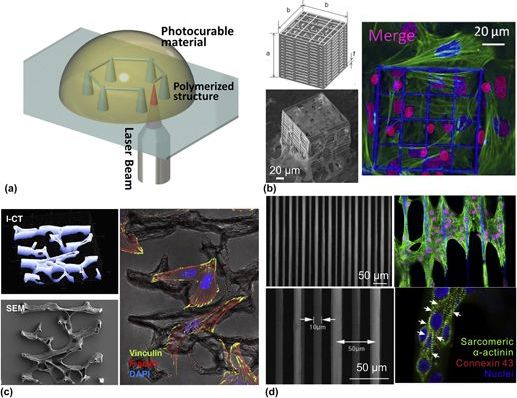Archive for the ‘bioengineering’ category: Page 139
Jun 4, 2019
Bill Andrews — Gene Editing, Stem Cells, NAD, Parabiosis, Senolytics
Posted by Montie Adkins in categories: bioengineering, biotech/medical, neuroscience

https://www.youtube.com/watch?v=y-5o980D9QM&feature=share
I didn’t know Bill Andrews created the treatments Liz Parrish took. Also, he has an Alzheimer’s human test next month.
Jun 2, 2019
Dr. Camillo Ricordi, M.D. — Director, Diabetes Research Institute and Cell Transplant Center, University of Miami — ideaXme — Ira Pastor
Posted by Ira S. Pastor in categories: 3D printing, aging, bioengineering, biotech/medical, business, DNA, genetics, health, life extension, science

Tags: aging, auto-immune, bioquantine, bioquark, biotech, camillo ricordi, diabetes, health, ira pastor, islet, longevity, pancreas, regenerage, regeneration, regenerative, stem cells, T1D, T2D, wellness
May 29, 2019
These Scientists Are 3D-Printing New Body Parts for Athletes
Posted by Quinn Sena in categories: 3D printing, bioengineering, biotech/medical
A team of bioengineers has successfully 3D-printed tissues they believe doctors could one day implant into patients to help heal the knee, ankle, and elbow injuries that have ended the careers of countless athletes.
“I think this will be a powerful tool to help people with common sports injuries,” Rice University researcher Sean Bittner said in a press release — though the impact of the group’s work could extend far beyond the turf or pitch.
May 27, 2019
Luba Greenwood, J.D., Head of Strategic Business Development and Corporate Ventures at Verily (formerly Google Life Sciences) — ideaXme show — Ira Pastor
Posted by Ira S. Pastor in categories: aging, big data, bioengineering, business, finance, health, innovation, life extension, science, transhumanism

May 26, 2019
Engineered Cells and CRISPR Kits | Genome Engineering
Posted by Genevieve Klien in categories: bioengineering, biotech/medical
Synthego offers Full Stack Genome Engineering Solutions. Our Engineered Cells and CRISPR kits enables all researchers to access CRISPR and accelerate their scientific discoveries, uncover cures for diseases, and develop novel synthetic biology applications.
May 23, 2019
The Government Is Serious About Creating Mind-Controlled Weapons
Posted by Quinn Sena in categories: bioengineering, biotech/medical, drones, genetics, government, nanotechnology, robotics/AI
DARPA, the Department of Defense’s research arm, is paying scientists to invent ways to instantly read soldiers’ minds using tools like genetic engineering of the human brain, nanotechnology and infrared beams. The end goal? Thought-controlled weapons, like swarms of drones that someone sends to the skies with a single thought or the ability to beam images from one brain to another.
This week, DARPA (Defense Advanced Research Projects Agency) announced that six teams will receive funding under the Next-Generation Nonsurgical Neurotechnology (N3) program. Participants are tasked with developing technology that will provide a two-way channel for rapid and seamless communication between the human brain and machines without requiring surgery.
“Imagine someone who’s operating a drone or someone who might be analyzing a lot of data,” said Jacob Robinson, an assistant professor of bioengineering at Rice University, who is leading one of the teams. [DARPA’s 10 Coolest Projects: From Humanoid Robots to Flying Cars].
Continue reading “The Government Is Serious About Creating Mind-Controlled Weapons” »
May 22, 2019
Laser-assisted biofabrication in tissue engineering and regenerative medicine
Posted by Quinn Sena in categories: bioengineering, biotech/medical, life extension
Volume 32 Issue 1 — Sangmo Koo, Samantha M. Santoni, Bruce Z. Gao, Costas P. Grigoropoulos, Zhen Ma.
Continue reading “Laser-assisted biofabrication in tissue engineering and regenerative medicine” »
May 21, 2019
Genetically engineered phage therapy has rescued a teenager on the brink of death
Posted by Quinn Sena in categories: bioengineering, biotech/medical, genetics
It’s a remarkable story of recovery, but it’s unclear how useful this sort of therapy could become.
The background: Isabelle Holdaway had been given less than a 1% chance of survival after a lung transplant, carried out to combat the symptoms of cystic fibrosis, left her with an antibiotic-resistant infection. She had been sent home and was in a terrible physical condition: underweight, with liver failure, and with lesions on her skin from the infection.
A breakthrough: Her consultant at Great Ormond Street Hospital in London worked with a team at the University of Pittsburgh to develop an untested phage therapy. This treatment used a cocktail of three phages, which are viruses that solely attack and kill bacteria. Two of the three phages, selected from a library of more more than 10,000 kept at the University of Pittsburgh, had been genetically engineered to be better at attacking the bacteria. The therapy was injected into her bloodstream twice daily and applied to the lesions on her skin, according to Nature Medicine.
May 21, 2019
Commander (ret) Dr. Luis Alvarez, Director of Organ Manufacturing, United Therapeutics, and Co-Founder of GDF11 Harvard spin-out Elevian and MIT spin-out Theradaptive — ideaXme Show — Ira Pastor
Posted by Ira S. Pastor in categories: aging, bioengineering, biotech/medical, business, defense, DNA, health, life extension, military, science














